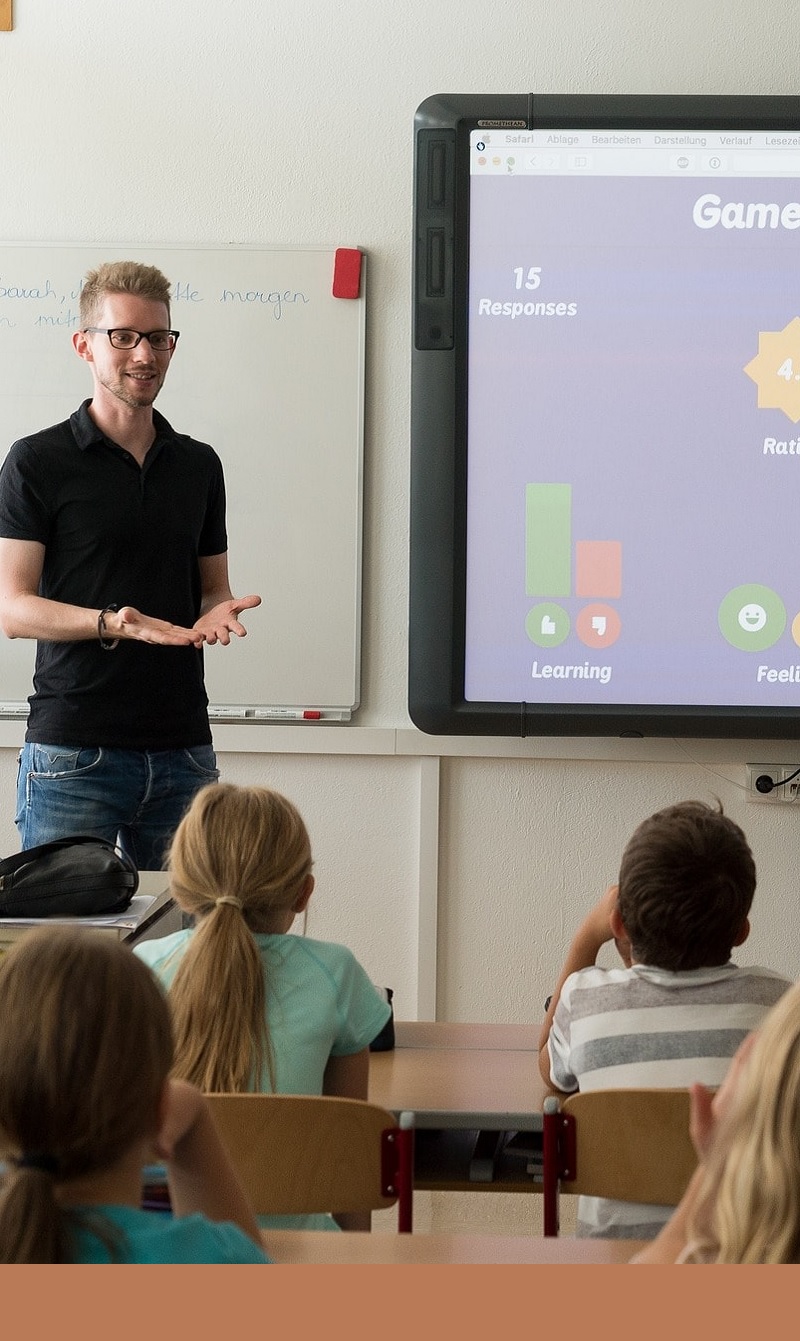Education in the 21st Century
Teaching and education in this century will set the tone for the ‘next’ future and for coming generations to be future ready. However, what does it mean to innovate the education system we’ve grown up on and the teaching style with which we were taught? Does innovation improve teaching and learning? We collate a few clues for some answers.
The rise of the internet brings along disruptions of astronomical proportions and places many industries on the cusp of an outright revolution – education, alas, isn’t immune to the disruptions. Change has to begin at the root and there are no shortcuts, especially when it comes to educating generations that will, in the end, govern the world.
Applying changes to something that has been established through the introduction of something new is common in this day and age. It’s called innovation and it’s a key word in almost everything in our daily life and that, of course, includes education – a fundamental element in every society.
The root of education is teachers. The shortage, thus the urgent need, for teachers can no longer be ignored. Almost a decade ago, the Occupational Outlook Handbook 2010-2011 foresaw the employment of teachers in America to grow by 13 per cent between 2008 and 2018. In 2008, there were already about 3.5 million kindergarten, elementary, middle and high school teachers in the country and reports states that there are around 3.2 million teachers in public American schools in 2018. Look at that number of teachers compared to the number of students: it’s been recorded that there are around 51 million school students in America in 2018.
Although these numbers are based on American statistics, but it reflects a universal problem – a shortage of teachers.
Statista reports, in 2018, South Korea had approximately 14.5 students enrolled in elementary education institutions per teacher, and the statistic doesn’t stray very much for middle and high schools either. While UNESCO’s data for China up to 2016 shows an average of 23.13 students per teacher. Veering west, according to reports, in the United Kingdom, the ratio of student to teacher in 2018 is approximately 16.4 students per teacher and around 16.1 students per teacher in public schools of America.
Why are these numbers important, you ask? Low student to teacher ratio allows teachers to better manage the class, sharpen observations that may need attention and action. Also, lower student to teacher ratio is fundamental for effectiveness in terms of knowledge transference.

Up the root, we get to STEM (excuse the pun). The basis of education are the subjects, taught by teachers and learned by students. The question here is, are the traditional subjects we’ve always known in school since time immemorial, still relevant? Traditional curriculum in schools that prioritise geography, history and arts may no longer be helpful or relevant, but what can be, in many opinions, are subjects that heighten employability opportunities for students. This is reflected in the demand for teachers for science, technology, engineering and math (STEM) education. In fact, this is an area where there’s a high demand for great teachers, globally.
Innovating Education
Again, to innovate an education system, it has to start at the root – with the teachers. The Brookings Institution, a non-profit public policy organisation in Washington DC, identifies three key areas to promote teaching innovation:
- First: teachers should allocate time and resources necessary to allow learners to interact and experiment.
- Second: teachers should review their own practices in order to identify and better align their creative, intuitive and personal capacities with those clusters of innovative pedagogies, such as using games to learn.
- Third: provide the necessary structures for teachers to integrate, rather than assimilate, new practices into their repertoire of teaching tools and designs.
Next, we innovate the education system. To begin, let’s look at a few realistic and applicable examples. The Smithsonian had listed seven examples of innovative education in 2015 that are reflective of this digital age, and thus, still relevant just under four years later, in 2019:
- Robot teachers: in a few South Korean classrooms, students learn English from Engkey, an egg-shaped robot English teacher that’s controlled remotely by a native English-speaker (in, say, Australia or America). South Korea has the best education system in the world in 2016.
- Forest kindergartens: innovation isn’t only about technology. In Denmark, and most Scandinavian countries, young children are given unstructured playtime outdoors to help develop their natural curiosity and prepares them for learning better. America, it has been reported, is following suit.
- Free university education: Germany did away with university fees entirely in 2014. This is so all Germans can access higher education. Germany’s free college scheme is open to foreigners too. Start practicing your Deutsch!
- 3D learning: in Dubai, classrooms and labs are connected by a super-high-speed fibre optic network as well as science lessons are delivered on a 3D platform. This draws student attention, and can help make abstract concepts easier to grasp.
- Literacy brigades: in Cuba, teachers reduce the nation’s illiteracy rate to less than four percent from the country’s original 59 per cent. The program inspired a method of community-based intensive literacy education called Yo Si Puedo or Yes I Can. It has been replicated around the world.
- Teacher autonomy: in Finland, highly trained teachers are given generous latitude to help their students learn in the way they feel is best. There’s very little standardised testing and no punishments for failing. Finnish schools consistently rank among the best in the world.
- Paperless classroom: in England, at the Essa Academy in Bolton, students are given an iPad and classrooms are equipped with cutting-edge digital projectors. The technology has helped the once-failing school become one of the highest achieving in the region. Students even design their own digital courses, which then become available worldwide.
Outcomes of Innovation in Education
In the past decade, OECD’s Measuring Innovation in Education 2019 states that innovation in education has been associated with the improvement of academic learning outcomes, both in primary and secondary education. Furthermore, ‘in countries where there has been more change in educational practices, students’ scores to international assessments have improved more on average.’ Research of the report shows that, ‘More innovation in science education is associated with more improvement in science scores in primary and secondary education; countries where primary reading lessons have changed the most have also usually had more improvement in reading. A positive association also exists in maths education, but only at the primary education level. Other outcomes such as student satisfaction or the enjoyment of science have also increased more where there was more innovation.’
In short, the OECD report finds that there’s a positive association between educational innovation and student satisfaction in primary education but no such association in secondary education. Of course, take into consideration that the research for this report was applied to limited subjects of maths and science in the secondary education level and requires further investigation, whereas it covered more comprehensively for primary education. What the OECD report does show is, innovation doesn’t always result in better outcomes, ‘in secondary education, countries that experienced more innovation have not improved their learning outcomes the most in mathematics, and no relationship with student satisfaction could be found.’
In higher education for instance, reports states that enrolment in online courses has more than quadrupled in the last 15 years in America but in other countries the numbers, though not as fat-growing, the trend is gaining traction. When it comes to MOOC or massive open online course, 2018 saw enrolment over 100 million students worldwide, which is a 30 per cent increase. There were more than 900 universities offering around 11,400 MOOCs, by the end of 2018. Interestingly, it has been observed that the number of courses seems to grow quicker than the number of students which means, fewer students for each course.
In an aptly titled 2014 Forbes article, The Future of Higher Education Depends on Innovation, Rick Beyer, managing partner of Miles Howland Education Partners which is an investment firm that focuses on the higher education sector, states that, ‘today, more than 1,000 colleges have online programs which provide consumers with many cost-effective options. All of these, and many other systemic trends, will no doubt lead to lower cost tuition.’ Innovation allows people of all strata to access education, and in turn, this spells equality. ‘Technology and innovation are creating increasingly attractive alternatives to existing systems of education,’ Rick adds.
Another thing to consider is that innovation in education should in principle only be encouraged when its benefits outweigh its costs and ‘more research on the effects of specific educational practices and of their combination should be encouraged at the local, regional, national and international levels.’ That would be in an ideal world, of course.
What Drives Innovation in Education?
A takeaway from the 339-page Measuring Innovation in Education 2019 published by OECD, is the list of key drivers of innovation and improvement in education:
- Human resources: the skills for, and openness to, innovation of actors within the education sector, notably teachers and faculty, are key aspects of a good innovation ecosystem.
- Learning organisations: innovation and improvement are strongly related to how work is organised and whether education establishments and professionals are able to both absorb and generate improved knowledge and practice.
- Technology: the application of general-purpose technologies to the education sector, and notably of digital technologies, is a key promise for innovation and improvement. In particular, the development and use of longitudinal information systems (and their big data) holds key promises for innovating the education sector.
- Regulation and system organisation: innovation and improvement only thrive where good ideas can be implemented and aren’t hidden by too risk-averse regulations on curriculum, assessment and such. It also depends on the entrepreneurialism of the actors, on incentives, and on the availability of funds for educational innovation.
- Educational research: the investment in and use of research and evaluation are key elements in an educational innovation ecosystem.
- Educational Development: as in other sectors, an education industry should develop innovative tools, organisations and processes to improve and change the practices in the education sector.
Last Words
Considering the technology we have today and the amount of information it affords us, it should improve the quality of learning outcomes. Interestingly, it has been observed that America, where computers and the internet were born, struggles to integrate educational institutions with their advanced technology while other countries have benefitted from applying it as well as American educational research, thus working within a successful innovative education system – Finland being an example.
Undoubtedly, lack of innovation can have significant economic and social backlash. What can drive change and encourage innovation in an education system is policy. TeachThought, a website dedicated to innovate education, lists policy as one of the barriers to innovating education. This is food for thought and applicable in almost everything that needs to be governed. Policy, the article states, is a natural consequence of attempting to manage something unmanageable and careful thinking is needed to solve important problems. When policies are adopted, only then can everyone be on the same page.
‘Policies are necessary only as a result of a system that’s either too large or too industrialised for the personalisation that it would ideally benefit from,’ the article states. Finally, ‘top-down change – programs from the district and state level, for example, can certainly support educators, but lasting innovation and change must come from a collaboration between learners, educators, and communities.’ At the end of the day, innovation, when applied collectively, should result in improvement. At least, that’s what we hope, isn’t it?
Photo by Wes Hicks on Unsplash





